
-
坂本龍馬 / STATUE OF SAKAMOTO RYOMA
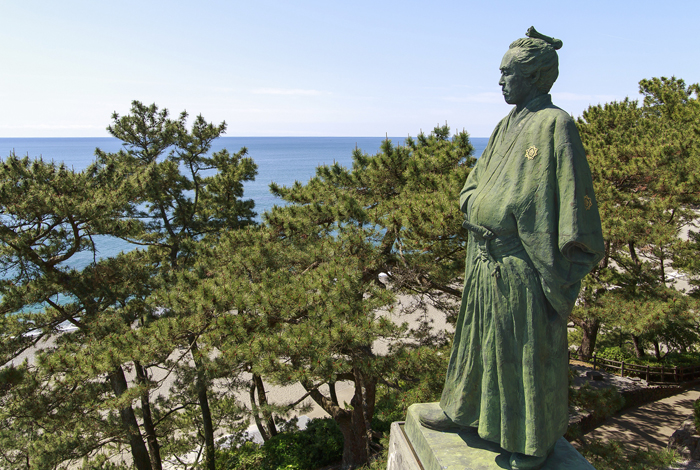
坂本龍馬は1835年(天保6年)、高知城下(現在の上町)に生まれた。2015年で生誕180年を迎えるが、今なお人々を魅了し、多くの龍馬ファンが高知を訪れる。高知県内には数々の龍馬縁の地があるが、中でも桂浜に立つ「坂本龍馬像」は龍馬ファンの「聖地」である。 この像には、『建設者 高知県青年』と記されており、資金を集め建立したのは当時まだ学生だった高知出身の若者たちであった。また、第二次世界大戦中、金属供出で全国の銅像が消滅する中この像は奇跡的に免れた。それは龍馬が海軍の創始者だからだといわれている。銅像になってなお逸話を残す、さすがは坂本龍馬である。
Sakamoto Ryoma is one of the most famous people in Japanese history. He is an influential figure in the Meiji Restoration, the great reform that marked the end of the Tokugawa Bakufu (shogunate) era, of Japan opening its doors to the outside world and taking its first steps towards becoming a modern nation. Ryoma is popular as a hero of this so-called Bakumatsu period, and numerous works including novels and movies have been made about him. Sakamoto Ryoma was born in 1835, in Kochi Prefecture. 2015 marks the 180th anniversary of his birth; but even now he continues to fascinate people, and many Ryoma fans continue to visit Kochi. There are numerous spots within Kochi Prefecture that have ties to Ryoma, but the most famous amongst them all is the statue of him that stands in Katsurahama. It can be seen in Kochi just how much Ryoma is loved, even with the passage of time since his death.

『高知フィギュアみやげ』においても不動の『メインキャラクター』。サイズ的に小さく価格も安いが、そのコストパフォーマンスの高さ、造形力の高さに注目。原型制作:香川雅彦
造形企画製作:株式会社 海洋堂 / 発売日: 2015年9月18日(一部先行発売 2015年8月8日) ※SEASON2(しんじょう君・くろしおくん):2017年11月8日 / 価格:1回 400円(税込) / 種類:全9種
-
高知城 / KOCHI CASTLE
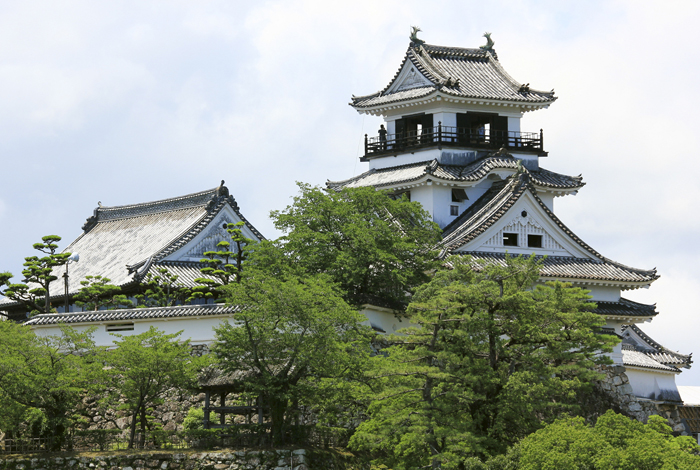
関ヶ原の戦いの功により土佐一国を拝領した初代藩主・山内一豊が1601年(慶長6年)に築城を開始、二代藩主・忠義が1611年(慶長16年)に完成させた。(1727年(享保12年)、追手門を除く多くの建物が焼失したが、1753年(宝暦3年)までに再建。)天守を含む15の建造物が国の重要文化財に指定されており、本丸の天守・御殿などの建造物が江戸時代の姿のまま揃って現存するのは全国でも高知城のみである。当初は「河中山城」という名であったが、度重なる水害に悩まされたため「河中」という字を嫌って「高智山城」と改名された。それが「高知」の地名の由来だといわれている。
Kochi Castle, renowned as a famous castle with over a 400-year history, is one of Kochi’s representative sightseeing spots. It was constructed by Yamauchi Katsutoyo — who entered the province (then called Tosa) in 1601 as the first feudal ruler of the Tosa domain— and completed in 1611. (It was later destroyed by fire and rebuilt in 1753.) 15 of the castle’s buildings, including the tenshu (keep), are designated as Important Japanese Cultural Assets. In particular, the honmaru (innermost ring of defence), including the tenshu, palace, and other buildings, have remained intact right up to the present day, without suffering loss or destruction by fire or war, and in the same state as they have since the Edo Period. Kochi castle is the only castle in Japan to retain all of these buildings in their original state. The castle was originally named Kochiyama Castle, which are said to be the origin of the modern day name of Kochi.

石垣はやや大げさに表現し、重厚な様子を創り出している。また、非常にコンパクトなお城であることを強調したいと思い、あえて天守閣を大きく造っている。原型制作:田熊勝夫
造形企画製作:株式会社 海洋堂 / 発売日: 2015年9月18日(一部先行発売 2015年8月8日) ※SEASON2(しんじょう君・くろしおくん):2017年11月8日 / 価格:1回 400円(税込) / 種類:全9種
-
かつおのたたき / SEARED BONITO
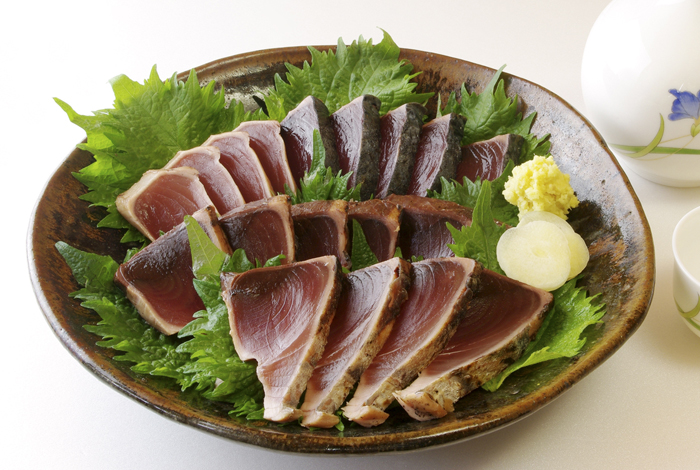
高知に行ったら必ず食べたいのが「かつおのたたき」。高知県民はかつおが大好きで、年間消費量は断トツの1位。なんと全国平均の4倍も食べているのだそう。土佐の海から鮮度抜群のかつおが獲れるのはもちろんのこと、消費量日本一という土地柄ゆえ全国からも美味しいかつおが集まってくる「かつお王国」なのだ。本場・土佐の食べ方といえば「藁焼きのたたき」。藁で燻された香りと香ばしい皮の歯ごたえが絶品。また高知特産の柚子などを使った「タレ」と薬味でいただくのが本場流。藁から勢い良く上がる火柱にかつおの節をくぐらせるという豪快な調理法も高知らしさを感じる。
When visiting Kochi, the dish that you should definitely try eating is “Katsuo-no-Tataki” (seared bonito). Citizens of Kochi adore bonito, and the prefecture consumes more of the fish per year than any other part of Japan by far. Aside from the fact that outstandingly fresh bonito can be caught in the sea of the coast of Kochi itself, the tastiest bonito is gathered in Kochi from all over Japan.The signature way to eat bonito in Kochi—the original home of “Katsuo-no-Tataki”—is “Warayaki” (grilling over a straw fire). The meaning of “Tataki” is to sear the surface of the sliced bonito over a flame. “Warayaki” is an exquisite dish that has the smoky aroma of the straw and the crisp texture of the spicy-smoked skin. The authentic Kochi way to enjoy the dish is to eat it dressed with a sauce made using special Kochi-grown yuzu (Japanese citrus fruits) and other seasonings.

高知県の代表料理。リアルにリアルを重ねて造形し、色を何度も重ね、色とツヤを再現。見ただけで「おいしそう!」と思わせるツヤ・透明感にこだわった。原型制作:寺岡邦明
造形企画製作:株式会社 海洋堂 / 発売日: 2015年9月18日(一部先行発売 2015年8月8日) ※SEASON2(しんじょう君・くろしおくん):2017年11月8日 / 価格:1回 400円(税込) / 種類:全9種
-
ニタリクジラ / BRYDE’S WHALE
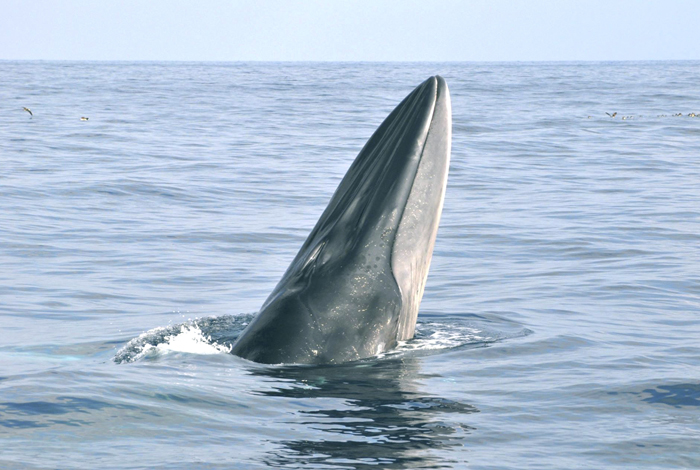
スラリとした体型と穏やかな性格から『海の貴婦人』とも呼ばれるヒゲクジラの一種。もとはイワシクジラと同種と思われていたが別種であることがわかり「ナガスクジラに似たイワシクジラ」の意味で「似たりクジラ」と命名されたといわれる。イワシの群れを追ってカツオの群れと一緒にいることが多いため、カツオ漁の目印にされていたり、高知民謡『よさこい節』では「潮吹く魚」と歌われており、古くから土佐の人々に親しまれている。土佐湾にはニタリクジラが定住していることが近年の調査で判明し、日本で唯一、ニタリクジラを対象としたホエールウォッチングが楽しめる。
The “Nitari-Kujira”, or Bryde's whale, is a species of baleen whale. It is sometimes also called “the lady of the sea” because of its slender body shape and calm demeanor. It was originally thought to be the same species as the sei whale ("Iwashi-Kujira" in Japanese) but was later found to be a different species. Because there are many cases in which it is found together with shoals of bonito in chase of anchovies it is used as a sign for bonito fishing, is sung of in the Kochi folk song "Yosakoi-bushi" as “the fish that spouts water”, and has been familiar amongst the people of Kochi since olden times.Kochi is the only prefecture in Japan where you can enjoy whale watching that specifically targets Bryde’s whales. Bryde’s whales typically live migratory lifestyles, but it has been determined through investigations in recent years that there are also some Bryde’s whales which have taken up fixed residence in Tosa Bay.

ホエールウォッチングの主役である巨大なニタリクジラ。小さなミニチュアフィギュアだが、優美かつダイナミックな姿をいっぱいに表現。原型制作:松村しのぶ
造形企画製作:株式会社 海洋堂 / 発売日: 2015年9月18日(一部先行発売 2015年8月8日) ※SEASON2(しんじょう君・くろしおくん):2017年11月8日 / 価格:1回 400円(税込) / 種類:全9種
-
よさこい祭り / YOSAKOI FESTIVAL
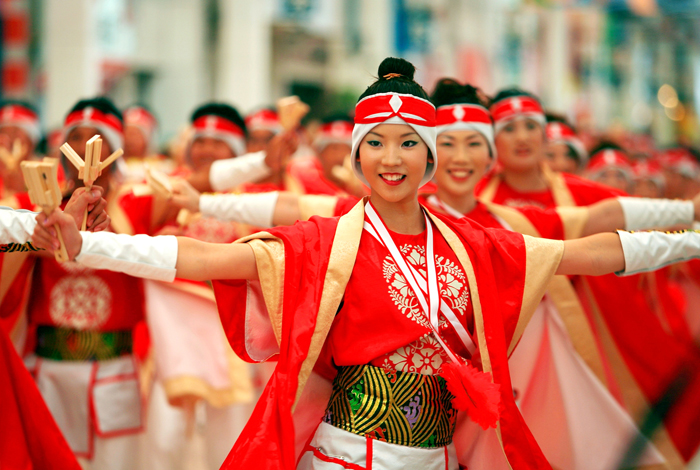
今では全国各地で開かれている「よさこい」の元祖が高知の『よさこい祭り』である。1954年に地元有志によって開催され、以降毎年8月9日の前夜祭を皮切りに4日間、街中がよさこい一色になる土佐の夏の風物詩。毎年全国から多くのよさこいファンが集まり、約200チーム、約2万人の踊り子が街中を練り歩く。「鳴子を鳴らし前進する踊りであること」「音楽によさこい鳴子踊りのフレーズを入れること」というシンプルなルールだけで、踊りも衣装も音楽もジャンルは無制限。それぞれの団体が工夫を凝らし全く違ったよさこい踊りが見られるのが『よさこい祭り』の魅力である。
The original starting point of the Yosakoi events that are now held all around Japan is Kochi’s Yosakoi Festival. The festival has become a firm feature of the Kochi summertime, in which the streets are immersed completely in the atmosphere of Yosakoi, large numbers of Yosakoi fans gather from all over Japan, and around 200 teams —made up of around 20,000 dancers— parade through the city streets.A "naruko" is a must-have item for participating in the Yosakoi Festival. As they dance, the dancers clack the naruko which they hold one in each hand together in time with their dancing. There are only two simple rules: that the dancers must move forwards while clapping their naruko, and that they must insert a naruko dance phrase into the music. Dance style, costumes and music are all unrestricted by genre or style, and the great attraction of Yosakoi Festival is to be able to enjoy watching each group perform an entirely different Yosakoi dance.

よさこいの基本ポーズ数種を再現し、「よさこい立体図鑑」として楽しめる。モデルは高知県観光特使「はちきんガールズ」。原型制作:香川雅彦
造形企画製作:株式会社 海洋堂 / 発売日: 2015年9月18日(一部先行発売 2015年8月8日) ※SEASON2(しんじょう君・くろしおくん):2017年11月8日 / 価格:1回 400円(税込) / 種類:全9種
-
はりまや橋 / HARIMAYA BRIDGE
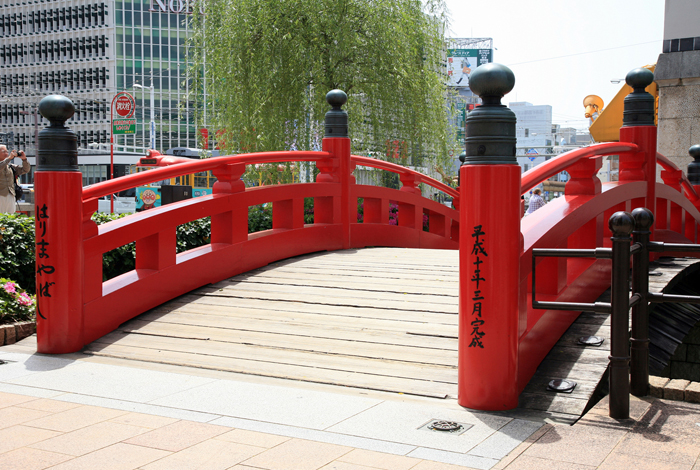
「はりまや橋」の由来は、江戸時代初期、高知城下の堀川を挟んで商いをしていた「播磨屋」と「櫃屋」が行き来するために架けた私設の橋だといわれている。高知県民謡として古くから伝わる『よさこい節』で「土佐の高知のはりまや橋で 坊さんかんざし買うを見た よさこい よさこい」と歌われており、全国的に名が知られている。現在の朱塗りの橋は、江戸の頃の姿をイメージしてデザインされたものだそう。また、実は「はりまや橋」は他に2つあり、1つは、すぐ横の国道が通っている石造りの「はりまや橋」、もう1つは国道の向こう側に明治期の鋳鉄製の欄干の「はりまや橋」が再現されている。
The Harimaya Bridge is one of the most famous sightseeing spots in Kochi. The Bridge originated as a bridge built privately by the Harimaya and the Hitsuya, wealthy merchants who did business between the two sides of the moat at the beginning of the Edo Period, for the purpose of going backwards and forwards across the moat. Since it appears in the lyrics of "Yosakoi-bushi", the Kochi folk song that has been passed down since old times, the name of the bridge is known throughout Japan. The current vermilion-lacquered bridge was designed based on an image of how the bridge would have looked around the Edo Period. There are two other Harimaya Bridges, one of which is the stone bridge immediately to the side of it, over which runs a national highway; while the other is a restored version of the Harimaya Bridge that was used during the Meiji Period, with cast-iron railings, which is located on the other side of the highway.

日本三大がっかり名所のひとつとして知られている高知一の観光名所。実際のちっぽけな感じをそのまま大切に表現し、可愛らしく魅力的に再現。原型制作:村田明玄
造形企画製作:株式会社 海洋堂 / 発売日: 2015年9月18日(一部先行発売 2015年8月8日) ※SEASON2(しんじょう君・くろしおくん):2017年11月8日 / 価格:1回 400円(税込) / 種類:全9種
-
鉄道ホビートレイン / TETSUDO HOBBY TRAIN
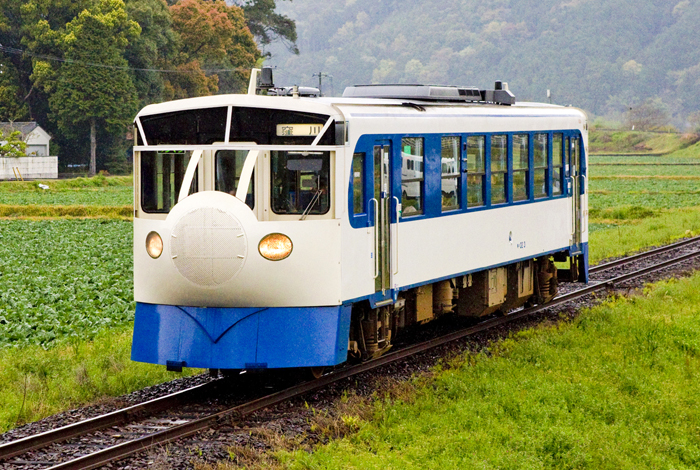
JR予土線全線開通40周年と宇和島駅ー近永駅間開通100周年にあわせ2014年に「鉄道模型と走るアミューズメントトレイン」として登場。キハ32形気動車を改造し、車内には鉄道模型を展示するショーケースや記念撮影ができる転換座席が設置されている。0系新幹線のような外観だが、窪川—宇和島間を約2時間かけてのんびりと走る。江川崎駅から窪川方面へは四万十川沿いを走り、車窓の外に広がる清流を眺めながらのんびりと旅することができる。予土線にはこの『鉄道ホビートレイン』のほか、『しまんトロッコ』『海洋堂ホビートレイン』が『予土線3兄弟』として活躍中。
Tetsudo Hobby Train is a sightseeing train that appeared as part of a “model railway and amusement train” attraction created in 2014 to celebrate the 40th anniversary of the opening of all lines of the JR Yodo Line and the 100th anniversary of the opening of the stretch of railway between the stations of Uwajima and Chikanaga. The train is a modified Kiha 32 model DMU (diesel multiple unit) railcar, the inside of which is fitted with display cases for exhibiting model railways and seats that allow for taking of commemorative photographs. The external appearance of the train is similar to the Shinkansen (bullet train), but it runs between Kubokawa and Uwajima at a leisurely pace, taking around two hours to complete the trip. After the train departs from Uwajima and passes Ekawasaki station, it runs alongside the Shimanto River, allowing passengers to view the clear-flowing waters spreading out before the train windows as they relax and enjoy their leisurely journey. In addition to this Tetsuo Hobby Train, the Shiman Torocco and Kaiyodo Hobby Train are also active on the Yodo Line; together making up the line’s so-called Three Brothers.

予土線を走る『日本一遅い新幹線』と呼ばれるホビートレインの立体化。やり過ぎと言える程のディテールを精密に手で彫り込んだ造形の妙を見て頂きたい。原型制作:谷 明
造形企画製作:株式会社 海洋堂 / 発売日: 2015年9月18日(一部先行発売 2015年8月8日) ※SEASON2(しんじょう君・くろしおくん):2017年11月8日 / 価格:1回 400円(税込) / 種類:全9種
-
カツオにゃんこ / KATSUO NYANKO
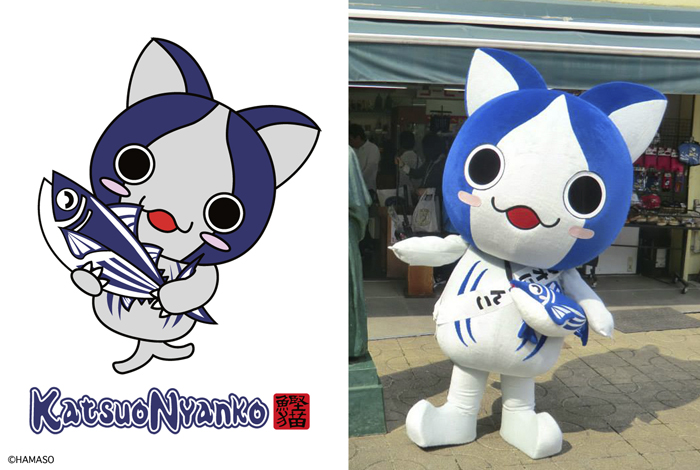
高知にも数々のご当地キャラクターが存在するが、いろいろな意味で注目を集めているキャラクターが「カツオにゃんこ(鰹猫)」。プロフィールは「桂浜の坂本龍馬像の所に捨てられていた小さな猫は土佐の鰹が大好物。大好物の鰹の事ばかりを思い続ける日々でした…。そして目が覚めたある日なんと体が鰹の様に!地元高知では鰹猫、またの名をカツオにゃんこと呼ばれています。」2011年6月にグッズとして販売されたご当地キャラクターだが、現在は高知県各地のイベントや観光地、また県外のゆるキャライベントなどで高知のPR活動に励んでいる。
In each region of Japan there are many local mascot characters. These characters are often designed using motifs based on local specialty produce or famous tourist spots and so on, in order to promote their particular area and provide an economic boost to their prefecture, town or city. Because of their “laid-back” cuteness they are also referred to as "yuru-kyara" (meaning loose or laid-back character). These "yuru-kyara" are popular with people of all ages, from children to adults.Kochi also has numerous local mascot characters, but the one that is currently gaining attention is “Katsuo Nyanko”: a kitten character who loves bonito so much that his body has become similar to that of a bonito. From the front he looks like a round-eyed pussycat, but actually has fins on his back and on the rear of his head. “Katsuo Nyanko” is currently taking an active role in PR activities for Kochi.

某人気キャラクターにとても良く似ていると話題だがこちらが先輩。「線の少ない可愛いキャラクター」という難題を可愛さとリアルさを融合して見事に立体化。原型制作:香川雅彦
造形企画製作:株式会社 海洋堂 / 発売日: 2015年9月18日(一部先行発売 2015年8月8日) ※SEASON2(しんじょう君・くろしおくん):2017年11月8日 / 価格:1回 400円(税込) / 種類:全9種
-
しんじょう君 / SHINJO-KUN
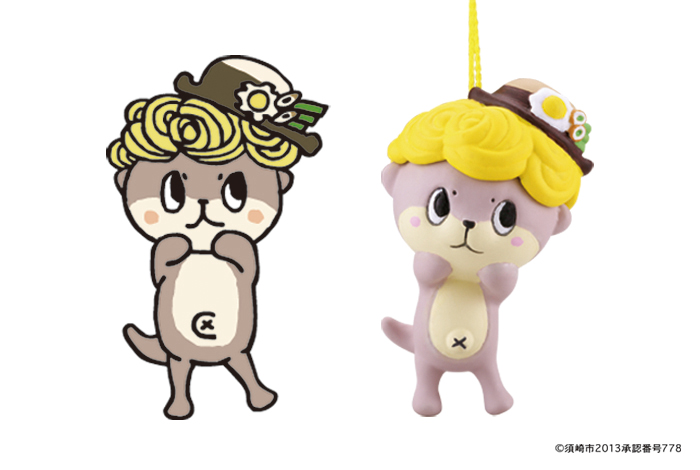
高知県須崎市のご当地キャラクター。須崎市の新荘川で最後に目撃されたが、残念ながら絶滅種指定されたニホンカワウソがモチーフ。そして須崎名物鍋焼きラーメンをモチーフにした帽子をかぶっている。県内のみならずTV出演や海外にも出張して魅力いっぱいの須崎市をPRしている。
Susan City's mascot in Kochi.He was created based on the japanese river otter,which was last seen in the Shinjo River in Susaki City, but has sadly been declared extinct. He wears a hat with the motif of Susaki's famous nabeyaki remain. He travels beyond the region, appears on TV and makes overseas business trips to promote the appeal of Susaki City.
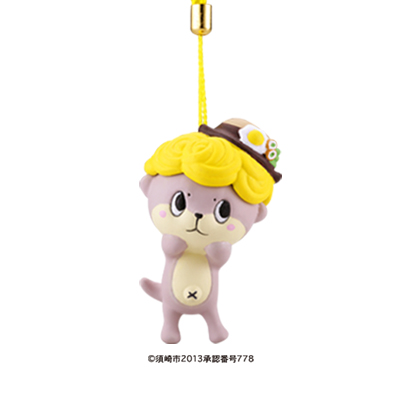
原型制作:村田明玄
造形企画製作:株式会社 海洋堂 / 発売日: 2015年9月18日(一部先行発売 2015年8月8日) ※SEASON2(しんじょう君・くろしおくん):2017年11月8日 / 価格:1回 400円(税込) / 種類:全9種
-
くろしおくん / KUROSHIOKUN
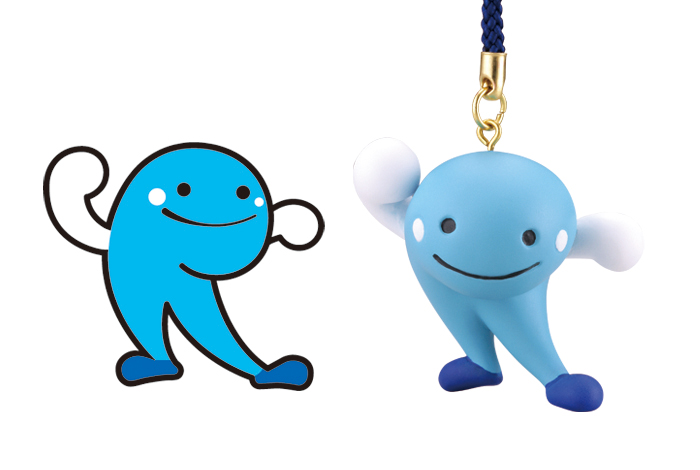
土佐湾沖を流れる「黒潮」をモチーフに、明るく元気な高知県のイメージキャラクターとして誕生した「くろしおくん」。「よさこい高知国体」や「花・人・土佐であい博」のイベントで活躍後、地域のイベントや県外のイベントでも活躍。今日も県のあちこちで高知をアピール中。
kuroshiokun was created as Kochi's mascot to express a cheerful and active image, with the motif of the kuroshio current flowing off Tosa Bay. After participating in events such as "Yosakoi Kochi Kokutai" and "Hana Hito Tosa Deai haiku", KUROSHIOKUN has played an active role in events both within the region as wells outside of the prefecture. Even today ha continues to promote Kochi throughout the prefecture.
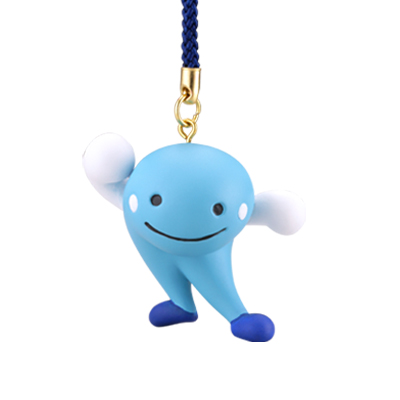
原型制作:村田明玄
造形企画製作:株式会社 海洋堂 / 発売日: 2015年9月18日(一部先行発売 2015年8月8日) ※SEASON2(しんじょう君・くろしおくん):2017年11月8日 / 価格:1回 400円(税込) / 種類:全9種
-
高知フィギュアみやげ / KOCHI FIGURE MIYAGE
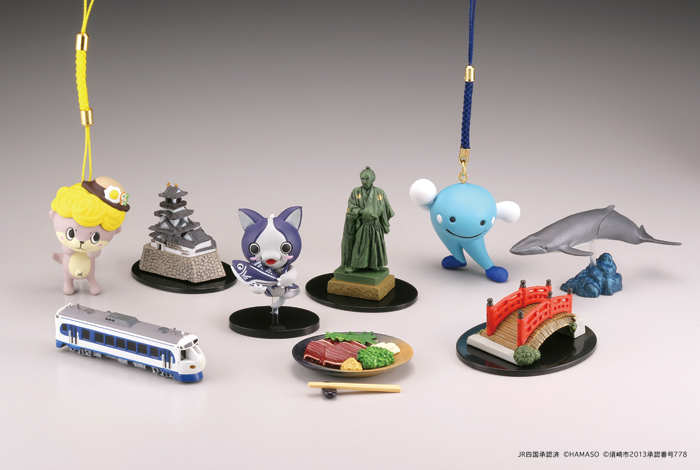
高知の名所、物産、文化… バラエティ豊かな“高知名物”を手のひらサイズのフィギュアにしました。
“KOCHI FIGURE MIYAGE” is the miniature figures of famous Kochi institutions!
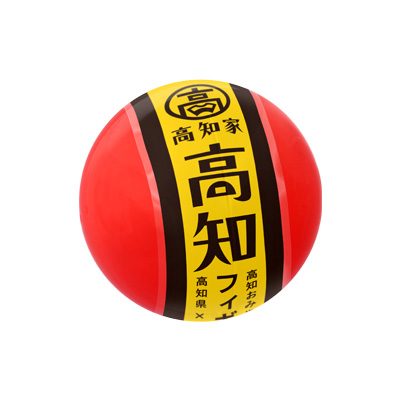
-
造形企画製作:株式会社 海洋堂 / 発売日: 2015年9月18日(一部先行発売 2015年8月8日) ※SEASON2(しんじょう君・くろしおくん):2017年11月8日 / 価格:1回 400円(税込) / 種類:全9種